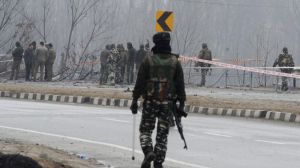As it looks to increase revenue collected from users, Bharti Airtel has hiked its entry-level tariff in two circles — Haryana and Odisha — by as much as 57 per cent. The telco’s move could prompt other operators, especially cash-strapped Vodafone Idea, to undertake similar tariff hikes.
In the Haryana and Odisha circles, Airtel has decided to scrap its cheapest Rs 99 plan that, along with talk time, offered users 200 MB of 2G mobile data for 28 days. With the plan’s withdrawal, the cheapest plan in these circles now starts from Rs 155 and offers unlimited voice calling, 1 GB of mobile data and 300 SMSes for 24 days.

Why is Airtel’s move significant?
A senior executive at the company said that Airtel decided to raise prices first in these circles to see how users, and more importantly its competitors, react. “If we see the other players also undertake hikes, that would be great for the industry overall. If the others also increase their prices in these circles, then we can think of hiking plan prices across the country,” an executive said. Haryana and Odisha circles together contributed 4.4 per cent of Airtel’s Adjusted Gross Revenues (AGR) in the first quarter of FY2023.
Story continues below this ad
Bharti Airtel has, for a long time, suggested that the average revenue per user (ARPU) of the industry needs to be around Rs 200 per month in the short term and eventually rise to Rs 300 for the industry’s sustainability. During the July-September quarter, Airtel’s ARPU had seen a jump of 3.8 per cent quarter-on-quarter to Rs 190, which is higher than Jio’s Rs 177.2 and Vodafone Idea’s Rs 131.
While Vodafone India has a similar Rs 99 plan for its subscribers, Reliance Jio’s comparable 28-day plan has unlimited voice calls for Rs91.
Industry experts believe that Airtel’s move will come as a shot in the arm of Vodafone Idea (Vi), which currently has the lowest ARPU among the three telcos. “Tariffs in the industry are still the lowest in the world. If there is a move by any operator to increase the base rate, then the others — Jio and Vi — may follow through with a similar tariff hike in the next few weeks or months,” said Prashant Singhal, EY Global TMT Emerging Markets Leader.
The three telcos had last undertaken a tariff hike of around 25 per cent in November 2021. Since then, they have spent top dollars in the 5G spectrum auction earlier this year, where they collectively bought spectrum worth Rs 1.49 lakh crore. In a research note, ICICI Securities said that if the competition follows, it will result in faster deleveraging of balance sheets and boost the generation of free cash flow, both being critical to telcos as they are currently spending signifcantly to roll out 5G networks.
Story continues below this ad
How could Airtel’s move impact the company?
Aside from allowing other telcos to hike tariffs, Airtel’s hike is not expected to affect its 4G users since the plan scrapped by the telco only offered 2G internet speeds. “By limiting the effective tariff hike only to 2G customers, Airtel has ensured its peers cannot take advantage of the situation to poach its 4G customers,” ICICI Securities said.
Citigroup said that if Bharti Airtel is successful in implementing this change across all its circles, its mobile revenues could rise around 2.5-3%.








































